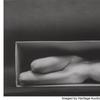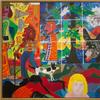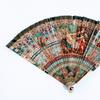Blood and Tears: Portrayals of Gwangju’s Democratic Struggle | Opens Sept. 6 | Anya and Andrew Shiva Art Gallery | John Jay College of Criminal Justice, CUNY
- NEW YORK, New York
- /
- August 30, 2022
Forty-two years after the May 18, 1980 Gwangju Uprising in South Korea when a large number of demonstrators were killed by government troops, the exhibition, Blood and Tears: Portrayals of Gwangju's Democratic Struggle, continues to unfold fading truths and historical distortions. On view September 6 - October 21, 2022 at the Anya and Andrew Shiva Art Gallery, John Jay College of Criminal Justice, City University of New York, Blood and Tears explores the history of Gwangju, which had a leading role in the fight for democratic freedom and human rights and subsequently became a hub for internationally-recognized contemporary art. The exhibition is curated by Thalia Vrachopoulos, professor of art history at John Jay College, and independent curator Soojung Hyun. An opening reception will be held on September 14, 6:00-8:00 p.m. with a performance by Hayoon Jay Lee.
Blood and Tears features work by 19 artists and 1 artist collective dating from 1981 to the present, ranging from traditional ink paintings, woodcuts, and paintings to more contemporary installations involving video, photography, and performance. Collectively, the different voices in the exhibition express the pain and suffering of that time period and the spirit of the freedom behind it. These artists from Gwangju act as witnesses to historical events of the past forty-two years. The socio-political South Korean art movement known as minjung emerged soon after May 18, 1980, inspiring generations of artists to come.
The remarkable democratic movement that took place in Gwangju was a protest against military dictatorship, social inequity, and neo-imperialism. Minjung artists based in Gwangju worked enthusiastically to bring their art into the socio-political realm and encouraged people to awaken to the social issues of their identity. They impacted public activities and expanded socio-political awareness not only in Korea, but in other countries throughout Asia, and in the U.S. influenced the Korean immigrant community who struggled with their identity while living as a minority in the United States. Gwangju’s political art with its legacy has now come to New York, one of the great centers of the art world.
About John Jay College of Criminal Justice: An international leader in educating for justice, John Jay College of Criminal Justice of The City University of New York offers a rich liberal arts and professional studies curriculum to upwards of 15,000 undergraduate and graduate students from more than 135 nations. In teaching, scholarship and research, the College approaches justice as an applied art and science in service to society and as an ongoing conversation about fundamental human desires for fairness, equality and the rule of law.
Anya and Andrew Shiva Gallery is located at 860 11th Avenue, New York, and online at: www.shivagallery.org. Gallery hours are Monday-Friday 10 a.m.- 6 p.m. For more information, please contact the gallery at info@shivagallery.org or 212-2371439.




10270x400_c.jpg)

















